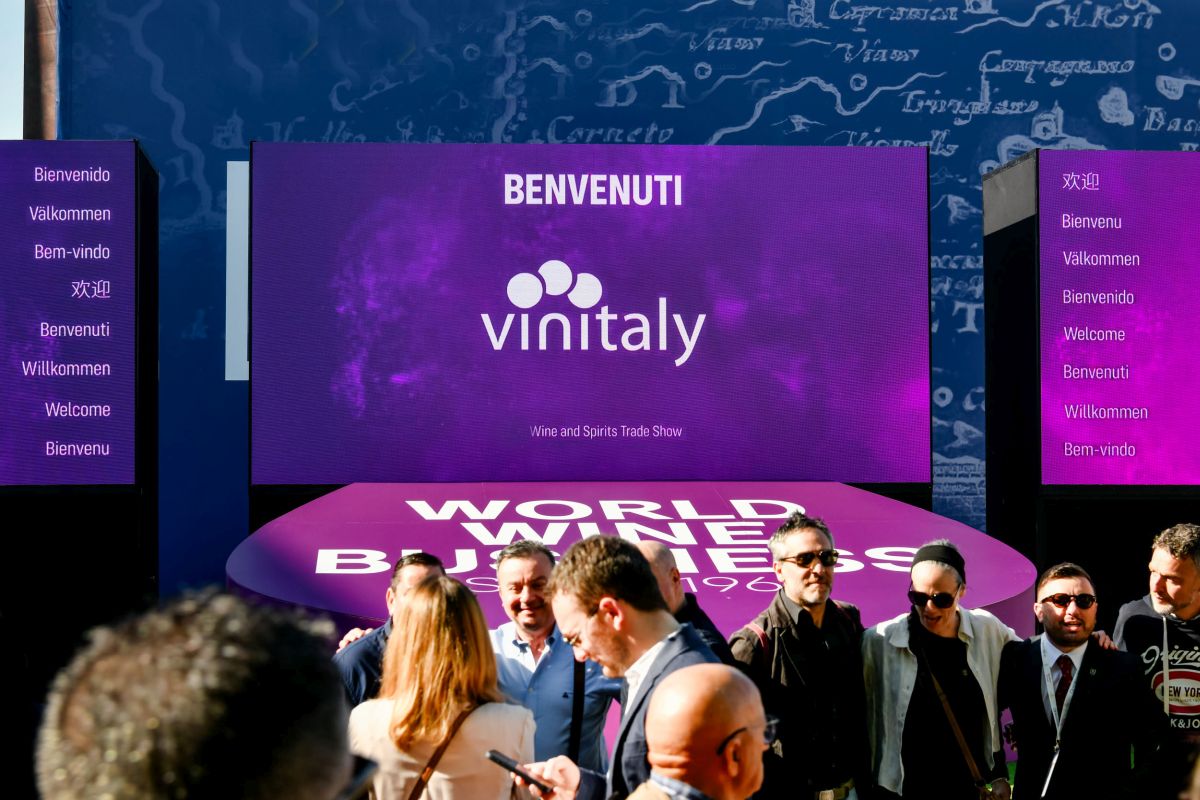VERONA (ITALPRESS) – Wine tourism enters the reach of the 57th International Wine and Spirits Exhibition with the number zero of Vinitaly Tourism, Veronafiere’s new project to promote experiences in the wineries of the Belpaese. Scheduled for Wednesday, April 9, Vinitaly Tourism debuts with 64 wineries, 16 buyers including tour operators, travel agencies, online travel agencies selected by Veronafiere from the United States, Germany, Spain and Italy, and 174 b2b matching in a speed date format already scheduled (2nd floor Palaexpo, Business Center, Entrance A1), conferences and a new research compiled by Roberta Garibaldi, president of Italian Wine and Food Tourism Association, the result of a series of surveys conducted on a representative sample of 1,500 Italian tourists.
“The growth of wine tourism recorded in recent years in Italy gives us back a snapshot of a heritage still unexpressed in its overall potential,” explains Veronafiere’s general director, Adolfo Rebughini. “Vinitaly Tourism intends to be the trade fair lever for the development of tourism of wine territories and, therefore, of our country’s companies. Vinitaly has always been the center of gravity of trends. The inclusion of this new area in the exhibition schedule accelerates a program plan that, in the coming years, may also land in our international events.”
According to the Report on Enotourism conducted by Roberta Garibaldi, the transition underway is evident: from simple “drinking wine,” consumers are increasingly moving toward “living wine” that is, wine not as a product for daily consumption, but rather as an experience to be enjoyed at 360 degrees within a wine tourism program that sees the winery as the most memorable experience of the trip and the product-wine as an icon of Italian food and wine. Results indicate that attention to visiting wineries and production areas continues to grow. Specifically, the number of Italian tourists who visited wine places increased from 60 percent in 2021 to 77 percent in 2025.
And wineries are confirmed over the years as the favorite “destinations” among places of production: 40 percent of Italian tourists say they have visited at least one winery during their most recent trips, compared to 32 percent in 2024 and 29 percent in 2021. Moreover, among Italian food and wine icons, wine leads with 38.1 percent of preferences ahead of extra virgin olive oil (24 percent), pizza (22 percent), pasta (15 percent) and cheese (11 percent). And a visit to wineries with wine tasting is considered by Italian travelers as the most memorable food and wine experience experienced during their travels (26 percent of preferences).
The potential of food and wine tourism is high, but business risks being penalized due to the presence of some critical issues, highlighted in the Report. Respondents highlight the lack of clear information about the experience (e.g., schedules, costs, content), which was remarked by 58 percent of Italian visitors, and the limitations in the time and days of the visit (54 percent), mainly due to the fact that many wineries remain closed on holidays, which are when the winelover public would have more available time to spend on enjoying the experiences. The critical factor text is particularly topical and is related to the fear of roadside checks after the visit and tasting experience, with the risk of license suspension. More than half of the respondents (53 percent) indicate this, also in light of recent more restrictive regulations.
The point about expected price is interesting. 63% of Italian tourists say that price has limited their decision to visit a production company (including wineries), and while 31% are willing to commit between 21 and 40 euros per visit, there is a 36% who do not intend to pay more than 20 euros. But there is also a willing third who say they are willing to pay more. For Roberta Garibaldi: “The data clearly highlight the importance of structuring targeted system actions to enhance food and wine tourism and rural areas, recognizing farms as the strategic fulcrum for the sustainable development of territories. The transport node must be tackled with determination, investing in training and incentivizing human resources so that operators can improve their offerings and attract tourist flows throughout the year.”
As for the wine destinations most appreciated by Italian and international winelovers, according to the digital trail analysis conducted in collaboration with Data Appeal, Langhe/Barolo, Chianti, and Montalcino received the highest ratings. Instead, among the most desired tourist destinations characterized by the presence of wine production, it emerges that Italian tourists would like to visit Cinque Terre (20.1% preference) and Salento (19.9%), Germans are more oriented towards Chianti (38%) and Montepulciano territory (27%), the British towards Etna (33%) and Chianti (30%) as well as Americans who, however, are more oriented towards Chianti (41%) and to follow Etna (32%).
Vinitaly tourism will host a calendar of thematic appointments on the future of wine tourism, between challenges and opportunities, organized with the scientific coordination of Roberta Garibaldi and the technical support of Winedering. Opening the proceedings of the in-depth conference will be “Wine tourism is not (just) a tasting: how to build a real business” by Winedering (from 10:10 to 11:40 a.m.). This will be followed by focuses coordinated by Roberta Garibaldi: “Oenotourism in Italy: data, trends and opportunities” (11:40 to 12:10), “Synergistic strategies for the enhancement of appellations and territory” (12:10 to 12:50), and “Innovation and sustainability in wine hospitality: the key role of the hospitality manager” (12:50 to 13:25). While the Wine Tourism Movement, with president Violante Gardini Cinelli Colombini, closes the Vinitaly Tourism sessions by shining the spotlight on “Wine tourism: regional differences, new challenges and opportunities” (1.35-2.10 pm).
– Veronafiere press office photo –
(ITALPRESS).

